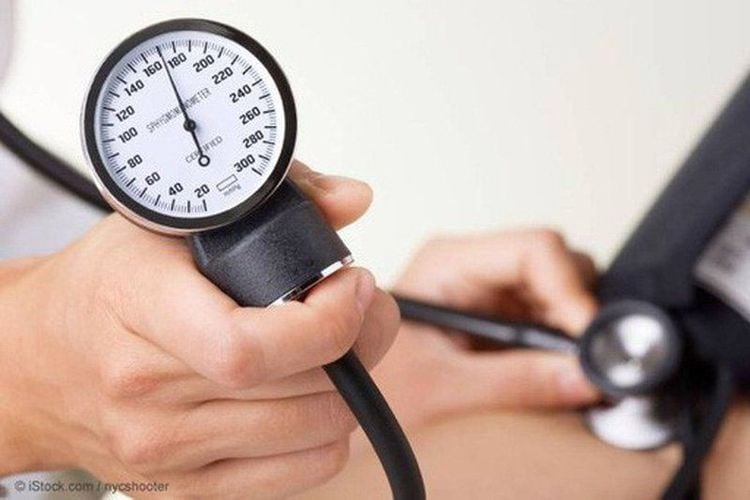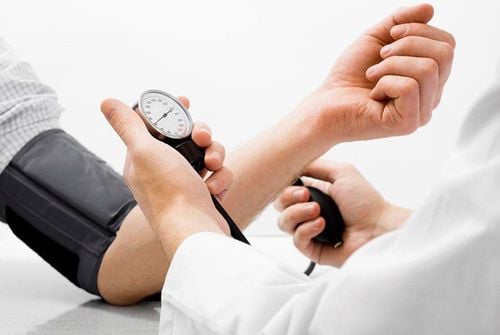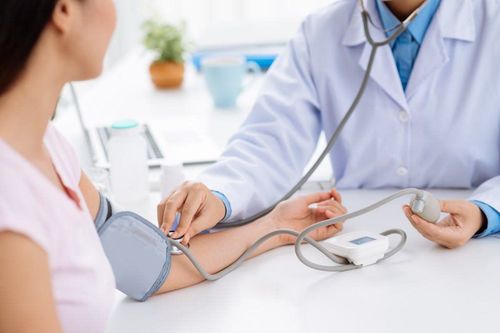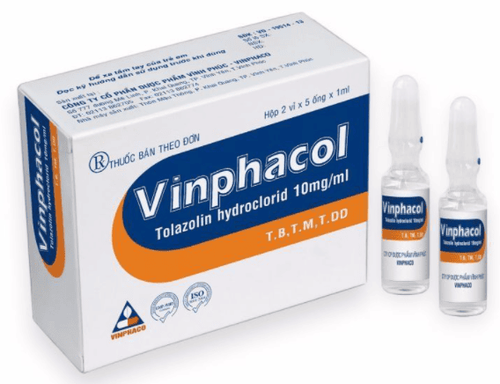This is an automatically translated article.
The article is professionally consulted by Master, Doctor Do Xuan Chien and Master, Doctor Hoang Thi Hoa - Department of Medical Examination and Internal Medicine - Vinmec Ha Long International General Hospital.Pulmonary hypertension is a disease that can occur at any age, from infancy to the elderly. Pulmonary hypertension if not treated promptly or removed the cause of the disease will have the risk of very serious complications. The following article will help us understand more about this disease.
1. What is pulmonary hypertension?
In normal people, the ventricles are responsible for pumping blood to the lungs to receive oxygen and circulate it throughout the body. As this process takes place, it puts pressure on the walls of the pulmonary arteries.For a number of different reasons, blood circulation can be obstructed and blood pressure in the blood vessels increased, possibly due to the atherosclerotic, narrowed or weakened pulmonary artery and capillary system.
Pulmonary hypertension is a type of hypertension. It affects the pulmonary arteries and the right side of the heart.
Pulmonary hypertension begins when the pressure on the walls of the pulmonary arteries is constantly increased. The right ventricular chambers will have to work harder to pump blood through the lungs as pressure builds, so the sphincter will weaken and eventually fail completely.
Pulmonary hypertension is a very serious disease. It often tends to get worse and can even lead to death.
Currently, pulmonary hypertension still cannot be cured, but can only reduce the symptoms of the disease.
Trắc nghiệm: Bạn có hiểu đúng về huyết áp cao không?
Huyết áp cao còn được gọi là kẻ giết người thầm lặng vì bệnh thường không có triệu chứng. Thiếu hụt kiến thức về huyết áp cao có thể làm cho tình trạng bệnh trở nên trầm trọng hơn. Dưới đây là những câu hỏi trắc nghiệm vui giúp bạn hiểu đúng về bệnh cao huyết áp.2. Symptoms of Pulmonary Hypertension
In the early stages of pulmonary hypertension, there are often no obvious symptoms. The disease progresses silently and has serious changes if not detected and treated in time. Some signs to recognize pulmonary hypertension include:When exercising, the patient will quickly feel short of breath, quickly exhausted; often feel tired; Chest pain; Swollen hands, feet, ankles; abnormally fast heart rate or pulse; Blue-violet spots appear on the skin and lips; Patients often feel dizzy, may faint; Subjects with heart and lung disease but increasing difficulty in breathing; The patient feels bloated and indigestion.

3. Causes of pulmonary hypertension
As blood flows through the heart, the lower right chambers pump blood to the lungs through the pulmonary artery. The blood releases carbon dioxide and takes in oxygen. Through the blood vessels in the lungs, oxygen-rich blood reaches the left side of the heart.Normally, blood flows easily through the vessels in the lungs because the pulmonary artery pressure is usually much lower. Changes in the cells lining the pulmonary arteries cause an increase in blood pressure. These changes cause blood vessels to become blocked or narrow, causing the arteries to harden or narrow. This is what causes the pressure in the pulmonary arteries to increase as the blood circulates.
Usually pulmonary hypertension is divided into 2 main groups of diseases, based on the cause of the disease:
Primary pulmonary hypertension: The cause of pulmonary hypertension cannot be determined. Some of the risk factors associated with this condition include: Genetic mutations, genetic factors; Effects of weight loss drugs of unknown origin; Because the patient has a congenital heart defect; Due to some other diseases such as HIV, cirrhosis; Due to venous and capillary disease (obstructed pulmonary veins...). However, at present, the causes of idiopathic pulmonary hypertension are largely unknown.
Secondary pulmonary arterial hypertension: Secondary pulmonary arterial hypertension occurs more commonly than primary pulmonary hypertension. Some causes of secondary pulmonary hypertension include: Due to some heart-related abnormalities such as valvular disease, left ventricular hypertrophy...; Abnormal conditions occurring in the lungs such as chronic obstructive pulmonary disease, pulmonary fibrosis, sleep apnea...; A pulmonary artery is blocked by a blood clot; Disorders of connective tissue (scleroderma or lupus); Patients with congenital heart disease or heart failure; Other parts of the body have complications and affect the pulmonary artery such as thyroid disease, primary polycythemia...; Due to the patient's use of stimulant drugs such as cocaine; Due to chronic liver disease; Due to lung disease, causing scarring between the alveoli in the middle tissue; The patient has sickle cell anemia.

Vinmec International General Hospital is a prestigious and reliable medical examination and treatment address for patients with cardiovascular disease in general and patients with pulmonary hypertension in particular. With modern equipment and a team of experienced cardiologists, always devoted to the health of patients, Vinmec is always highly appreciated by experts for the quality of cardiovascular examination and treatment and is the address trusted by many patients.
Please dial HOTLINE for more information or register for an appointment HERE. Download MyVinmec app to make appointments faster and to manage your bookings easily.














